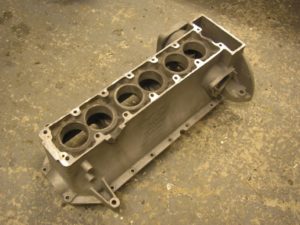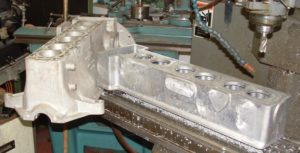Blocks, Studs & Water Jackets
What a load of rot!
Facing the worst
The picture on the right shows an all too familiar sight – an AC cylinder block, in this case a PVT one, just about rotted out. And even this is not the worst that we have seen!
How do they get into such a state?
The rot is caused by electrolytic action which attacks both cylinder block and head studs. Specifically, as the block deteriorates, the top surface of the block is rotted away making it impossible for the head gasket to seal. This allows water to climb up the head studs and to emerge on top of the head, from where it drops down the chain case into the sump. The sealing surfaces of the cylinder lands are also degraded and water enters the sump past the liners, turning the oil to a horrible, grey sludge. The second picture shows a seriously corroded cylinder head stud. Studs in this condition, as in the picture to the right, frequently snap.
Starting at the beginning
It is a complete waste of time rebuilding an AC engine unless the cylinder block is in really good condition, meaning that there is no corrosion present and that all mating surfaces are both uncorroded and flat. If this is not the case, then remedial action must be taken to avoid serious and expensive disappointment.
Putting it right
Fortunately, a corroded block does not have to be scrapped. Even very dire blocks can be retrieved cost-effectively. Our water jacket conversions not only replace rotted material with sound metal but restore the mating surfaces to ensure that the figure-of-eight gaskets and head gasket can perform their functions efficiently once more.
And when it’s done?
When the water jacket replacement is complete, your block can be returned you for rebuilding, or we can complete the engine rebuild for you.
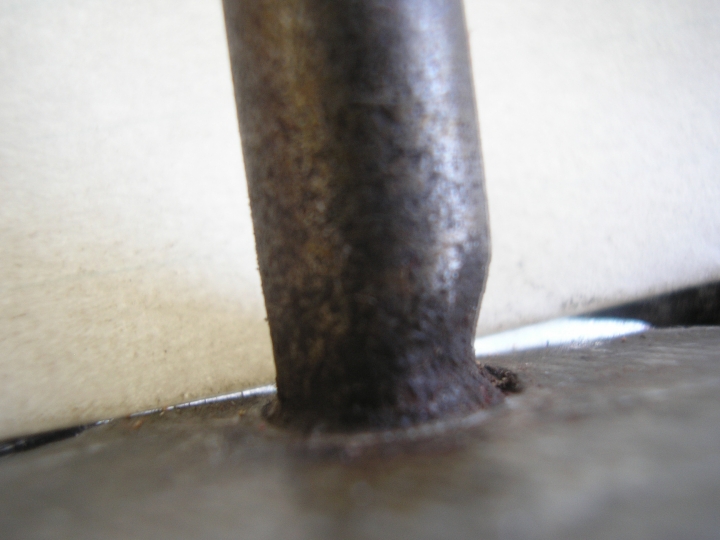
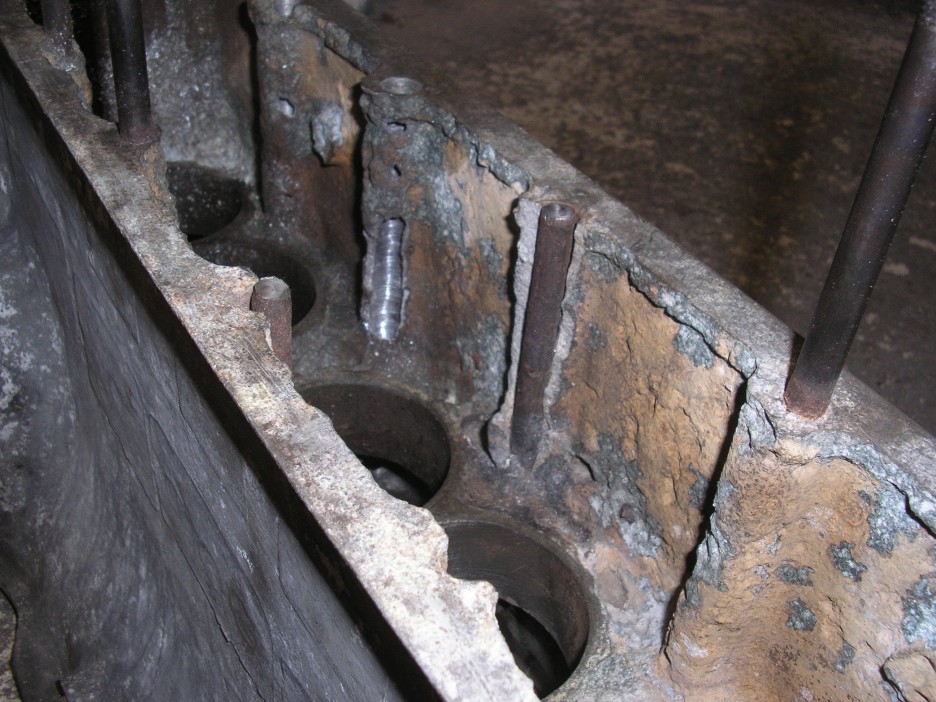
Water Jacket Replacement
1. Removing the rot
The first step in any water jacket replacement is to remove the corroded water jacket and old head studs and to fit thread inserts for the new head studs where required.
2. Machining it flat
The next stage is to machine the mating surfaces of the block and water jacket casting to ensure a perfect fit. Once the jacket has been fitted, its top surface and cylinder lands are machined to the correct height, following which the new housings for the cylinder liners are matched to the originals.
3. Fitting it out
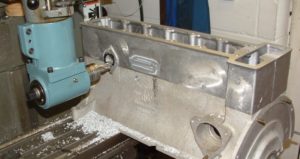
When the two parts of the restored block have been sealed and secured together, the final tasks are to drill and tap the holes where studs will be fitted and to install the new feed pipe that carries oil from the main supply up to the camshaft and rocker gear. The block and sump may also be machined now if an oil seal conversion is required.
